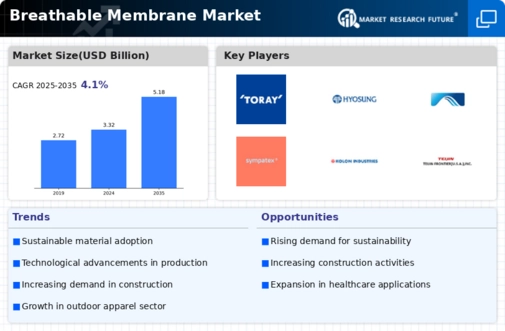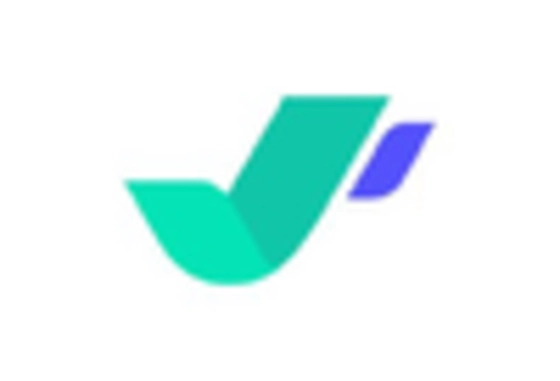The Breathable Membrane Market is currently characterized by a dynamic competitive landscape, driven by increasing demand for high-performance building materials and a growing emphasis on sustainability. Key players such as Gore (US), DuPont (US), and 3M (US) are strategically positioned to leverage innovation and technological advancements. For instance, Gore (US) focuses on developing advanced membrane technologies that enhance moisture management in various applications, while DuPont (US) emphasizes its commitment to sustainability through eco-friendly product lines. These strategies collectively shape a competitive environment that is increasingly focused on performance and environmental responsibility.
In terms of business tactics, companies are localizing manufacturing to reduce lead times and optimize supply chains. The Breathable Membrane Market appears moderately fragmented, with several key players exerting influence over specific segments. This fragmentation allows for niche players to thrive, while larger companies consolidate their market positions through strategic partnerships and acquisitions, enhancing their operational capabilities and market reach.
In August 2025, 3M (US) announced a significant investment in expanding its production capacity for breathable membranes, aiming to meet the rising demand in the construction sector. This move is strategically important as it not only increases 3M's market share but also positions the company to respond swiftly to customer needs, thereby enhancing its competitive edge. The expansion is expected to bolster 3M's ability to deliver innovative solutions tailored to specific market requirements.
In September 2025, DuPont (US) launched a new line of breathable membranes designed specifically for the automotive industry, highlighting its focus on diversifying applications beyond traditional construction uses. This strategic initiative indicates DuPont's intent to tap into emerging markets, potentially increasing its revenue streams and reinforcing its position as a leader in innovative materials. The automotive sector's growing demand for lightweight and efficient materials aligns well with DuPont's capabilities, suggesting a promising avenue for future growth.
In October 2025, Saint-Gobain (France) entered into a partnership with a leading technology firm to integrate AI-driven analytics into its production processes for breathable membranes. This collaboration aims to enhance product quality and operational efficiency, reflecting a broader trend towards digital transformation in the industry. By leveraging AI, Saint-Gobain (France) is likely to improve its responsiveness to market changes and customer preferences, thereby solidifying its competitive stance.
As of October 2025, the Breathable Membrane Market is witnessing trends such as digitalization, sustainability, and the integration of advanced technologies like AI. Strategic alliances are increasingly shaping the competitive landscape, enabling companies to pool resources and expertise. Looking ahead, competitive differentiation is expected to evolve, with a shift from price-based competition to a focus on innovation, technology, and supply chain reliability. This transition underscores the importance of adaptability and forward-thinking strategies in maintaining a competitive edge in the market.


















Leave a Comment